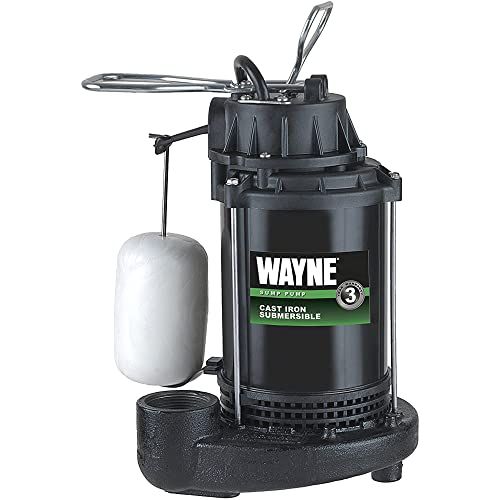Review: Wayne Submersible Pump
The Wayne Submersible Pump is a reliable and efficient solution for pumping water from basements, pools, and other flooded areas. With its powerful motor and rugged construction, this pump is designed to handle various water transfer tasks. In this review, we will explore the key features, factors to consider before making a purchase, address common questions, and provide a conclusion on the Wayne Submersible Pump.
Key Features

The Wayne Submersible Pump boasts several notable features that make it a top choice for many users. Firstly, it is equipped with a high-performance motor that ensures efficient pumping and reliable operation. The pump's submersible design allows it to be fully submerged in water, enabling it to remove water close to the floor level.
The pump also comes with a durable and corrosion-resistant construction, making it suitable for prolonged use in demanding environments. It features a thermoplastic construction and a built-in float switch that automatically activates the pump when the water level rises above a certain point. This feature eliminates the need for constant monitoring and ensures efficient water removal without any hassle.
Additionally, the Wayne Submersible Pump offers multiple discharge options, allowing users to choose between various hose sizes for optimal water flow. The pump also includes an integrated handle for easy transportation and installation, further enhancing its user-friendliness.
Factors to Consider

Before purchasing the Wayne Submersible Pump, there are several factors that users should consider:
1. Pump Capacity: Evaluate the pump's capacity and ensure it aligns with your specific needs. Consider factors such as the volume of water to be pumped and the desired speed of water removal.
2. Power Source and Cord Length: Determine if the pump's power source (e.g., electric or battery-powered) suits your requirements. Also, consider the length of the cord to ensure it can reach the desired power outlet.
3. Build Quality and Durability: Assess the pump's construction materials and design to determine its durability. Look for corrosion-resistant materials that can handle prolonged submersion and harsh environments.
4. Safety Features: Check if the pump has safety features such as a built-in float switch, thermal overload protection, and a robust housing to prevent electrical hazards.
5. Ease of Use and Portability: Consider factors such as the pump's weight, handle design, and ease of installation. Opt for a pump that is easy to transport and install, especially if it will be used across different locations.
6. Price and Warranty: Compare prices and warranties offered by different manufacturers to ensure you get the best value for your money. Consider the reputation and reliability of the brand as well.

Common Questions

Q: Can the Wayne Submersible Pump handle debris?
A: Yes, the Wayne Submersible Pump is designed to handle small debris and particles. However, for larger debris, it is recommended to use a separate filter or strainer.
Q: What is the maximum pumping capacity of this pump?
A: The Wayne Submersible Pump has a maximum pumping capacity of X gallons per minute (GPM), which may vary depending on the model and specific conditions.
Q: Is this pump suitable for continuous use?
A: The Wayne Submersible Pump is designed for intermittent use rather than continuous operation. It is essential to follow the manufacturer's recommended usage guidelines to ensure optimal performance and prolong the lifespan of the pump.
Conclusion

The Wayne Submersible Pump offers an efficient and reliable solution for pumping water from various flooded areas. With its submersible design, durable construction, and user-friendly features, this pump is a top choice for those in need of effective water removal. When considering your purchase, carefully evaluate the pump's capacity, power source, build quality, safety features, ease of use, and price. By doing so, you can ensure that the Wayne Submersible Pump meets your specific needs and provides a long-lasting solution to water removal challenges.

